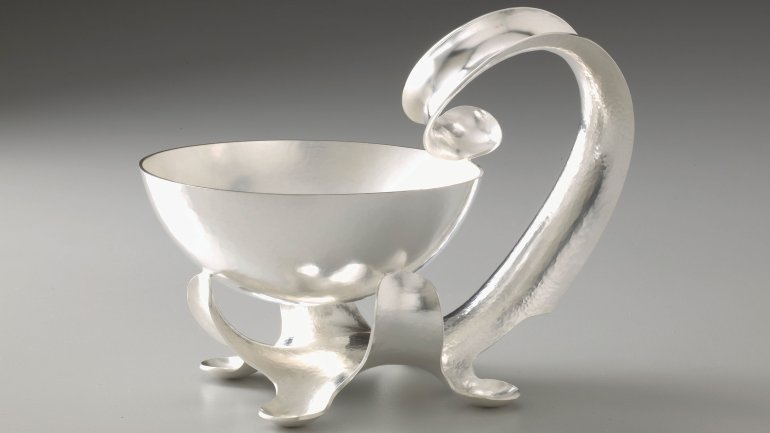A Lifetime of Lessons
A Lifetime of Lessons
Jack da Silva started working with his hands when he was a child, helping out with his family’s 100-year-old gravestone company. Da Silva was, in his words, “the low man on the totem pole,” tasked with cleaning and simple assembly and disassembly. That humble beginning ignited a passion for craft, one nurtured by his accomplished family – his forebears include embroiderers, stonemasons, and winemakers – and by numerous teachers he encountered along the way.
Da Silva’s Interlude (2009) is a kind of summary of that lifelong learning. The sterling silver vessel, composed of a simple cup and an elegant combination handle-base, shows off the versatility of metalworking, its opportunities for both discipline and experimentation. The cup’s clean edge comes from a technique da Silva learned from ACC Gold Medalist Alma Eikerman at Indiana University, where he earned his MFA, and the holder is formed with a complex combination of curves. What da Silva most enjoys about the piece is “how the form moves through space, how the reflections and the shadows play across the form and on the table.”
Interlude is the work of an artist whose mastery can be traced to years of study. Talking about his work, da Silva returns time and again to the influence of his instructors. He credits Eikerman for teaching him centuries-old techniques she herself learned at a Danish silversmith company, the blacksmith Jack Brubaker for showing him how to use his tools more efficiently, and even his childhood percussion teachers for giving him the grip he now uses in his workshop.
Da Silva’s first instructors, though, remain the most important to his story. His family of makers showed him, from an early age, the value and wonder of manual skills. He knows how lucky he is to have grown up in such a setting, to have had those first crucial teachers. “If you don’t see it,” he says of their honed expertise, “it’s hard to know it exists.”




